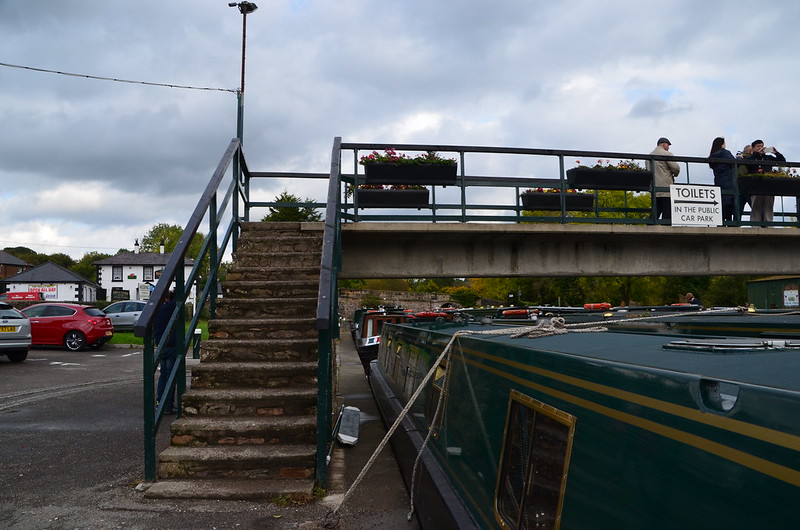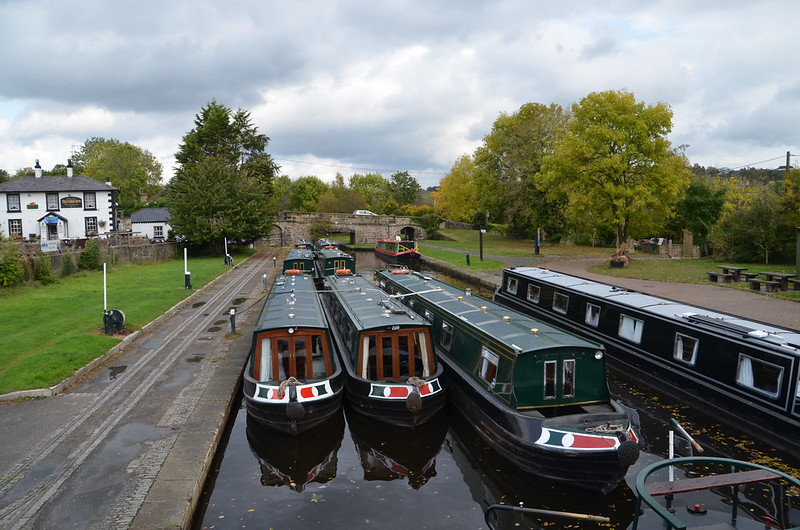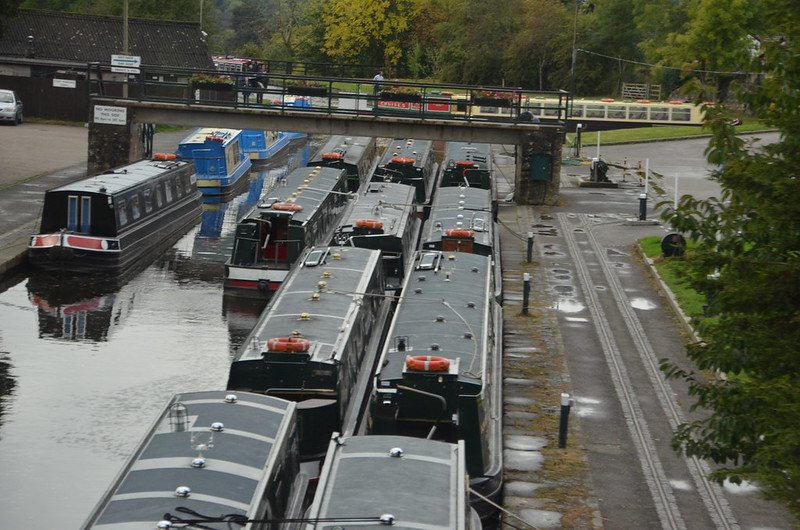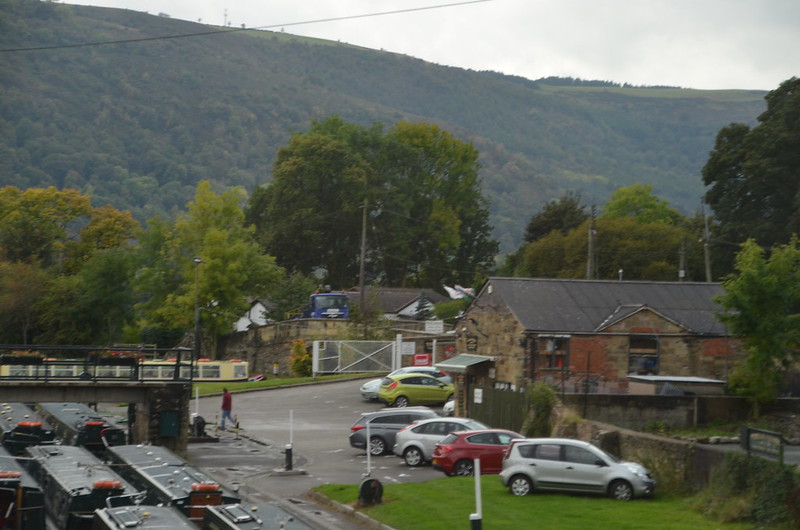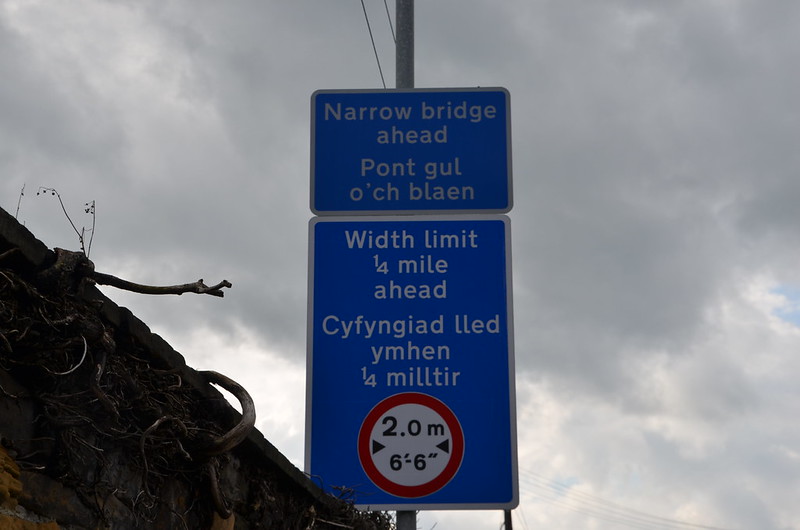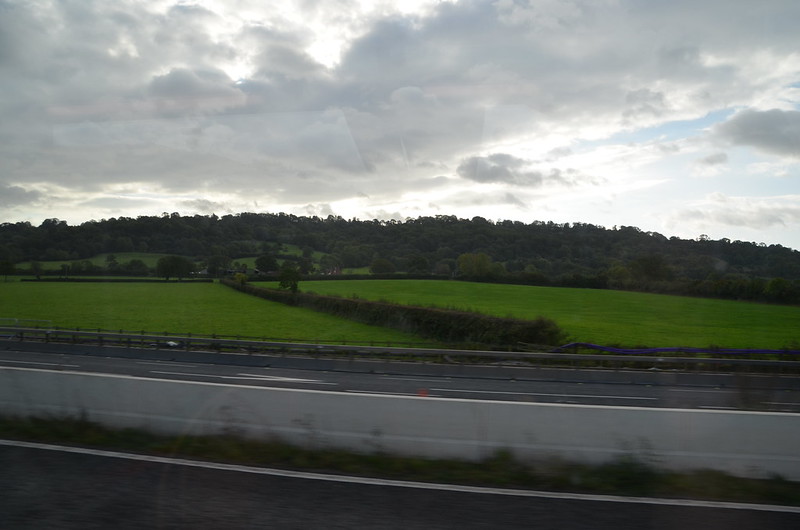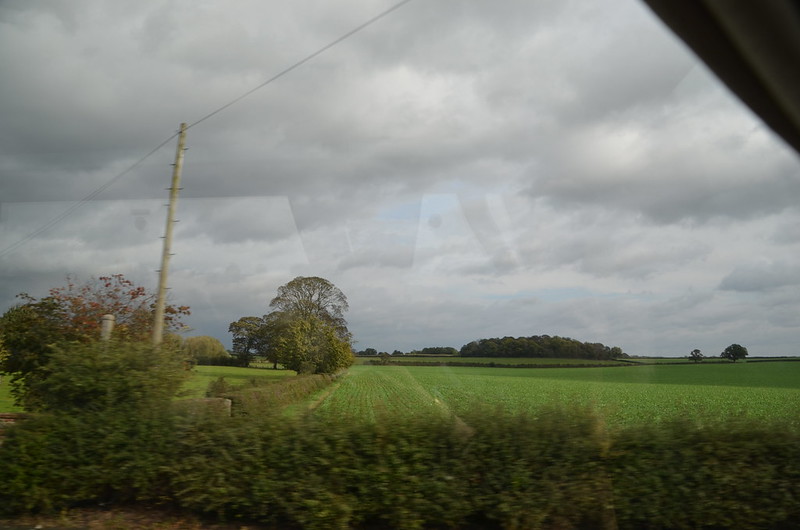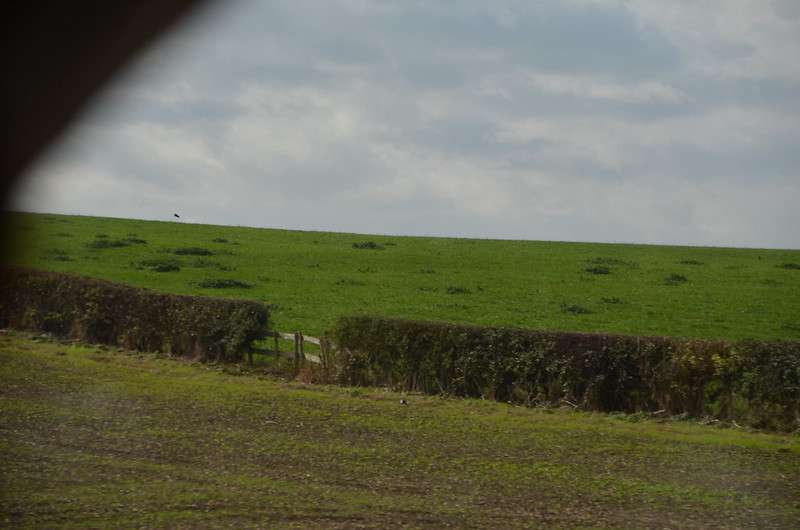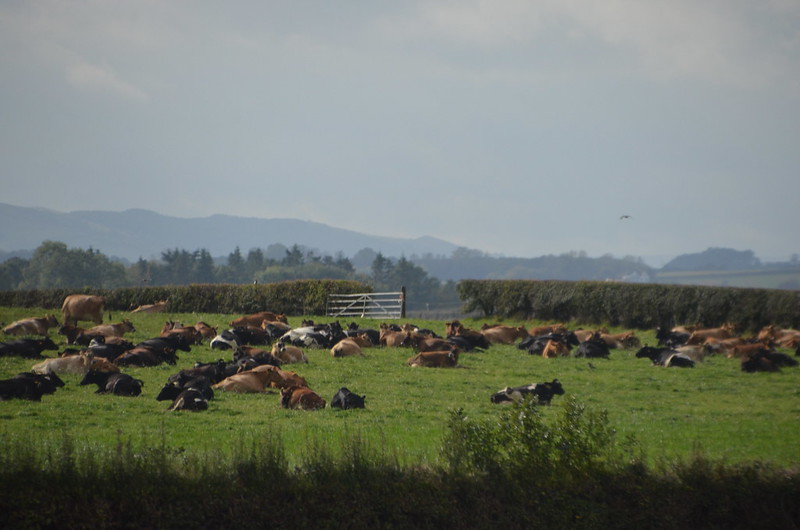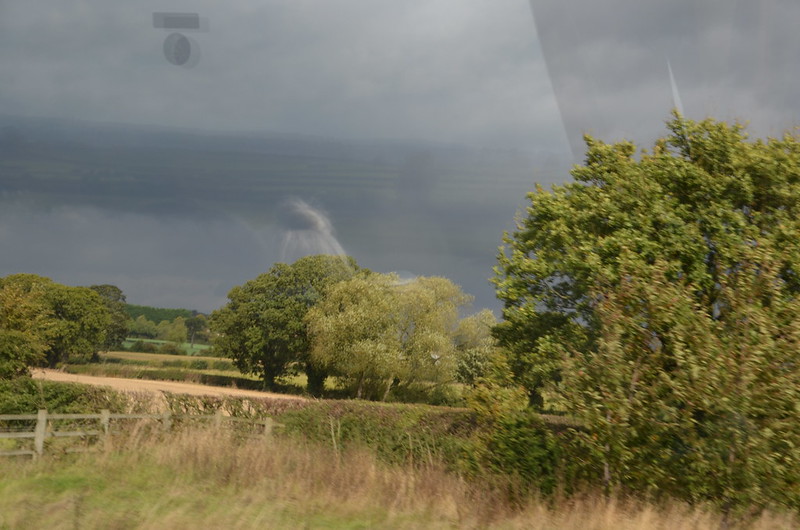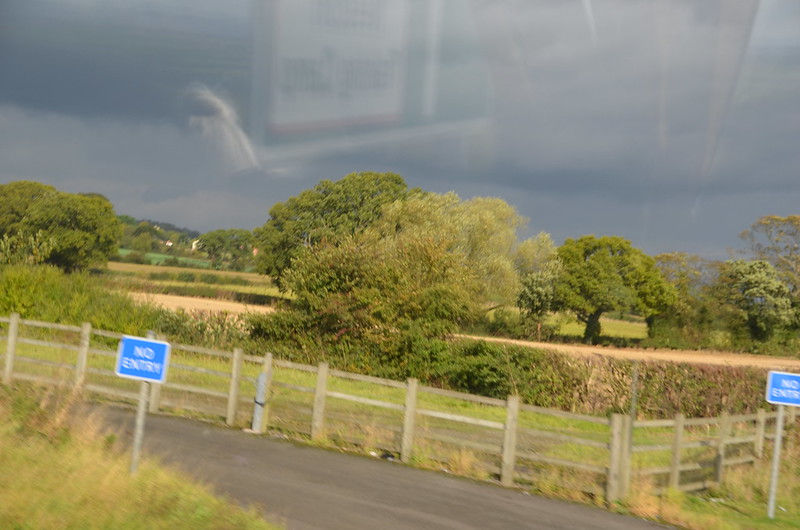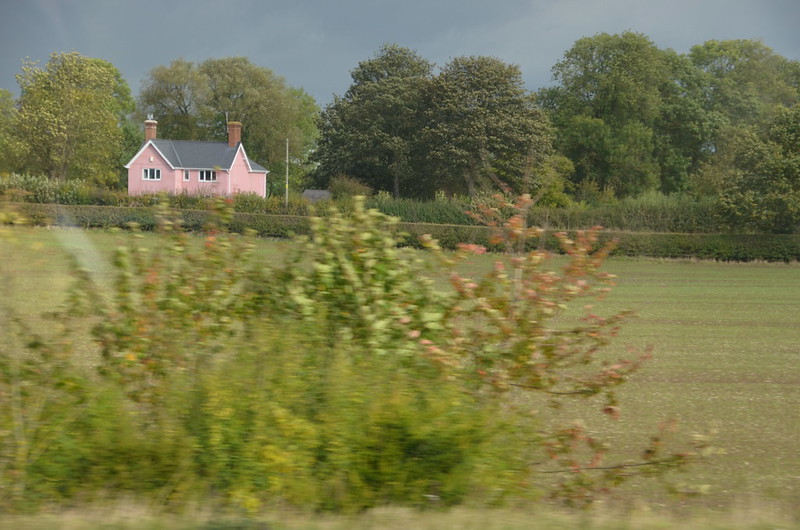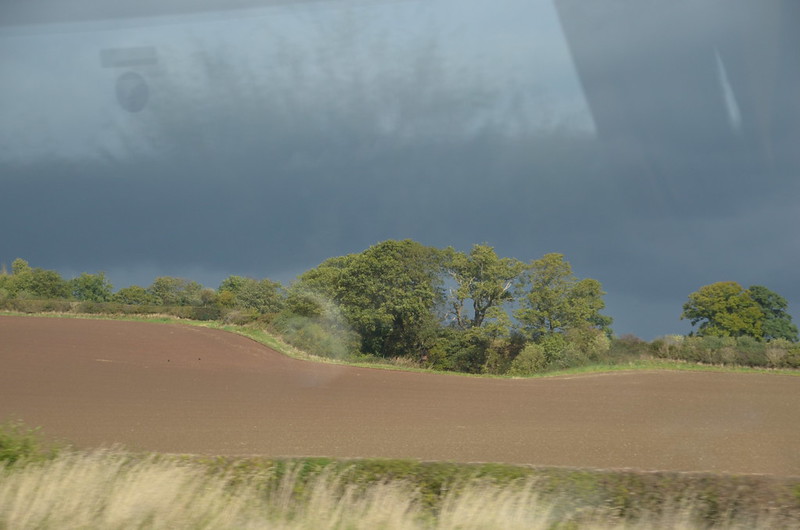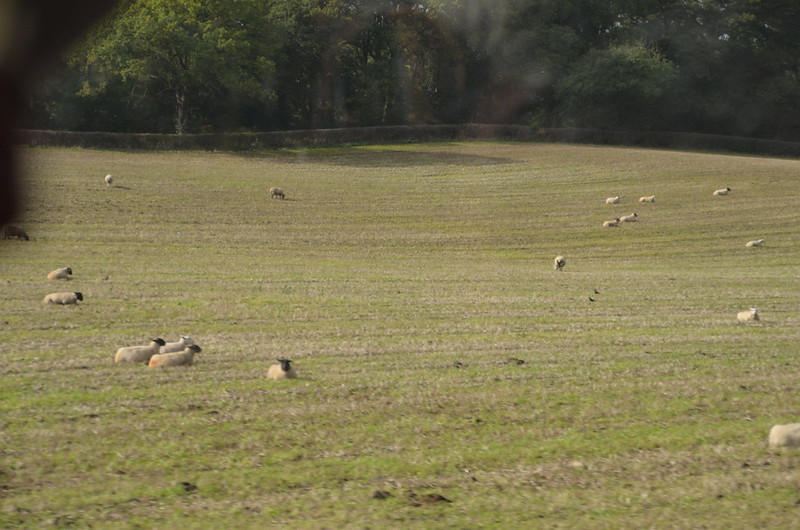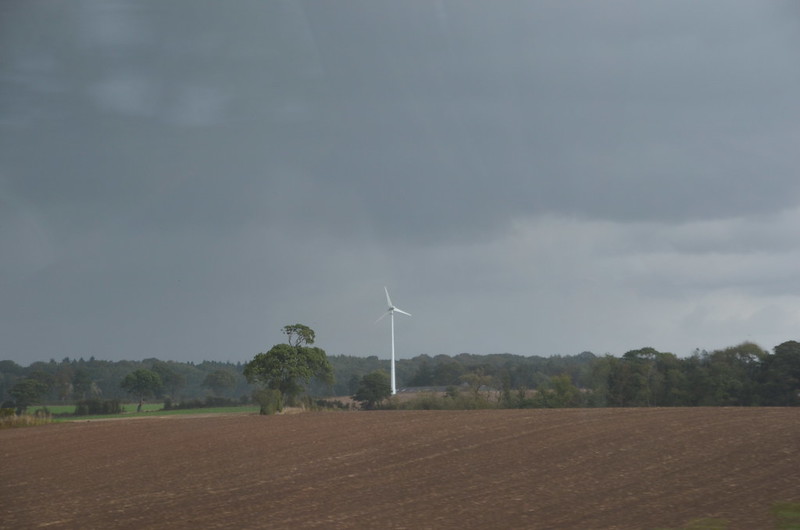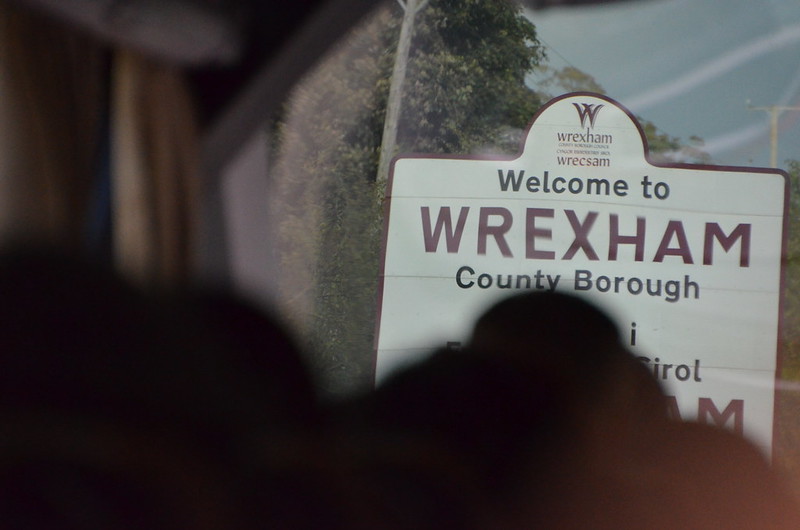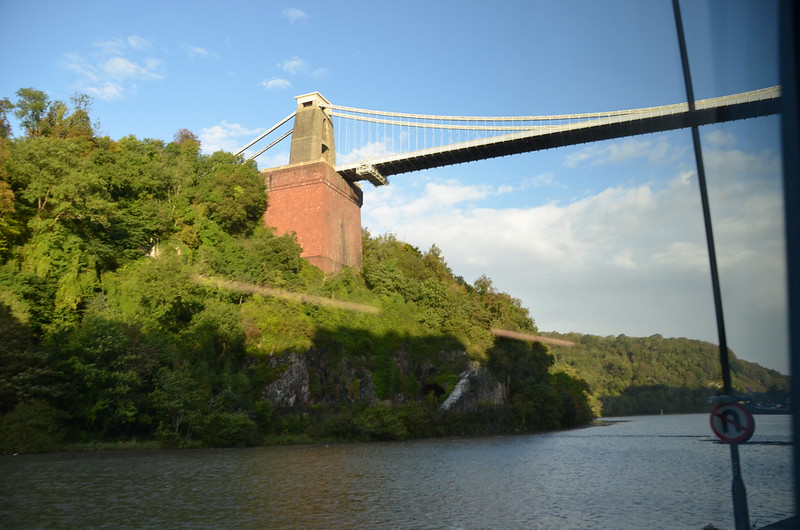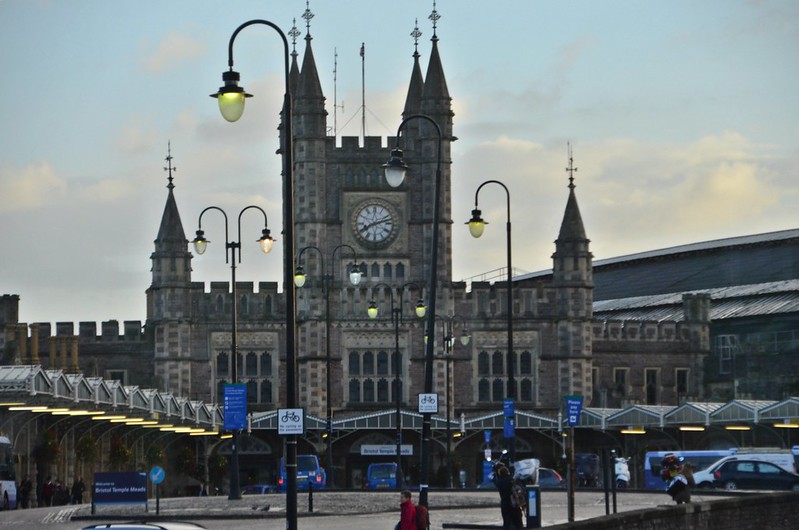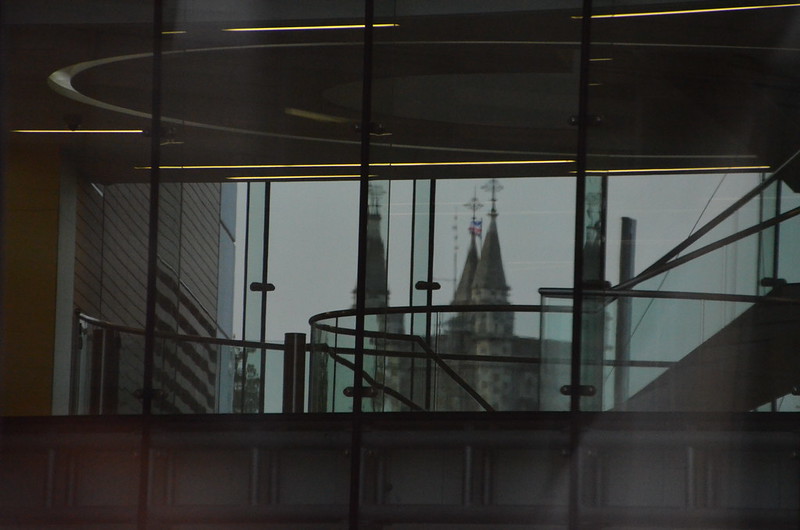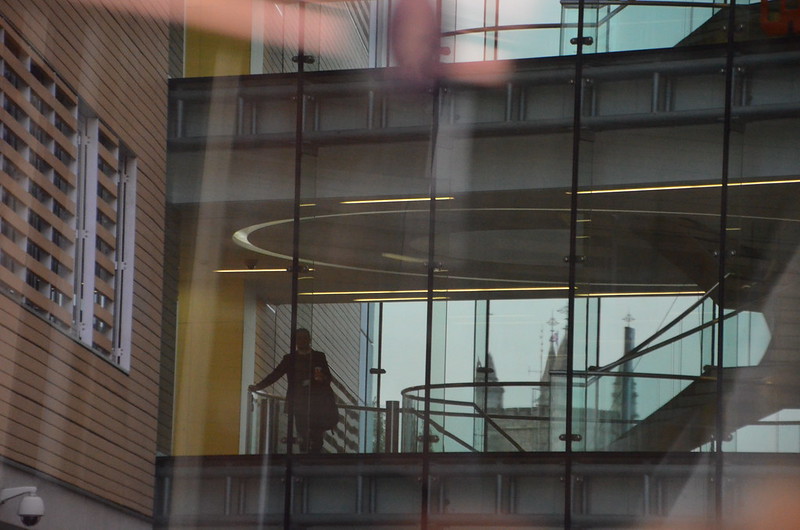
The flower boxes on my left side as I crossed the footbridge caught my eye as I looked around, noticing so many interesting sights.
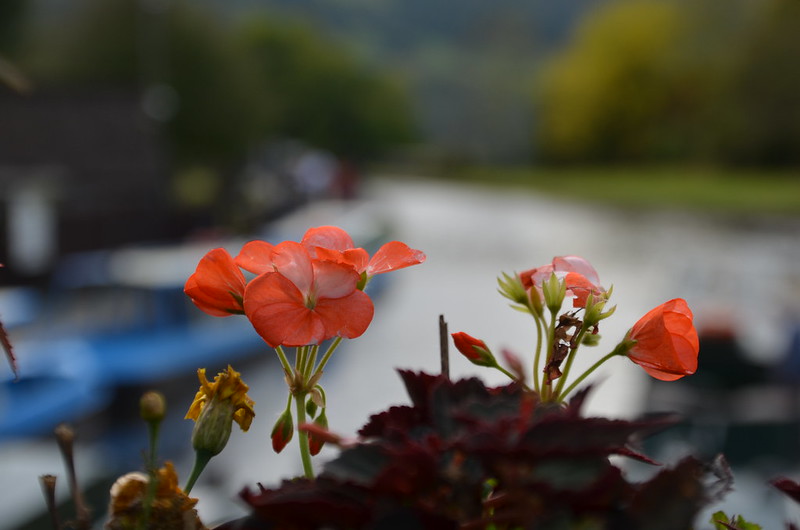
To my right, beautiful blossoms with the aqueduct in the background.

Back to the left, striped petunias! I had no idea these even existed.
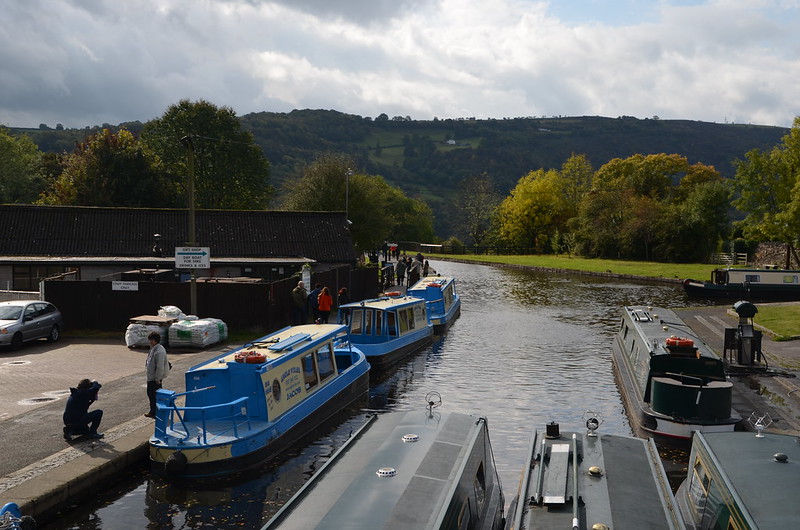
You can tell just how bright the sunshine was in this particular photo. Our luck held, no rain even with that gray sky in the distance. There on the left of the canal, James photographs Martina--a very nice couple among many fine folks in our tour group. One of these days, I hope to see his photos because I imagine, no, I know that they will be outstanding!
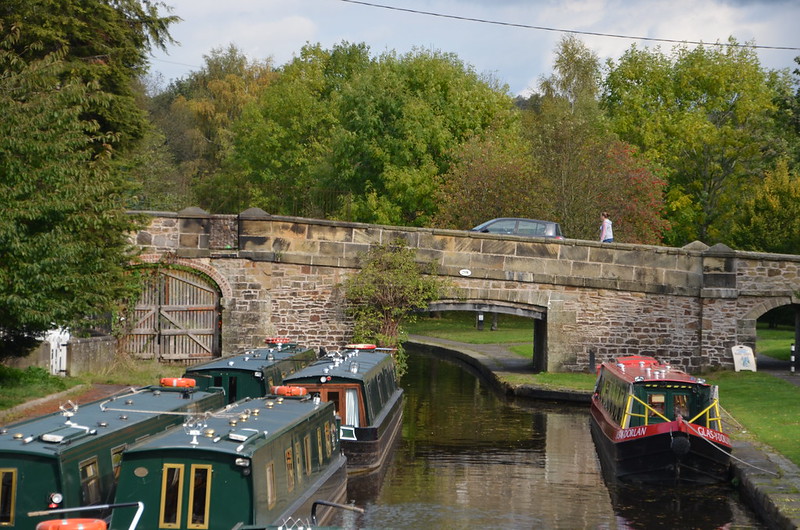
I turned around one more time before walking down the steps and off the footbridge. Am I ever glad that I did because I decided to zoom in on the bridge on the New Road. I wonder how old it is? Very old is my guess. See those two gray trapezoid shapes atop those short, pillar-like structures towards the left of the bridge. There's a wrought iron gate there. Well, I assume it's a gate, but why would a stone wall on a bridge have a gate, or an opening, for that matter? Anyway, you can see through it the different colored stones which are on the inside of the bridge's opposite wall.
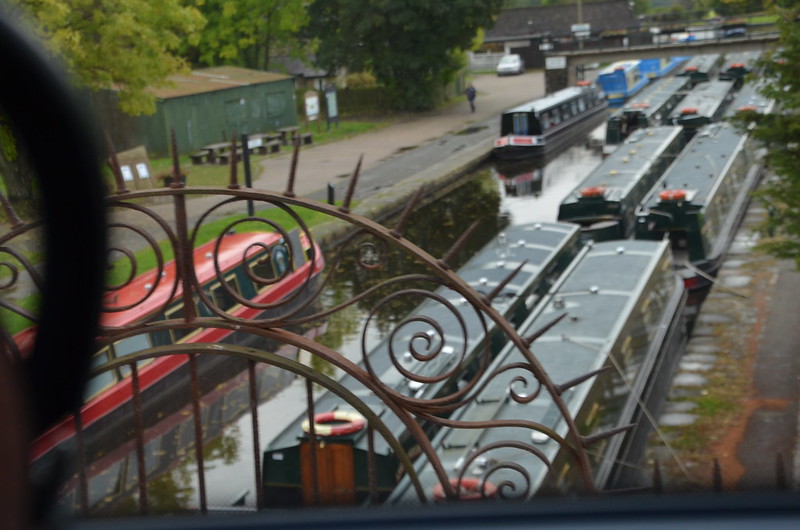
So, when I noticed the wrought iron in the close up of the bridge, I remembered a photo that I had taken through the coach window while we backed off the bridge. Now it makes sense! Thanks, zoom lens!
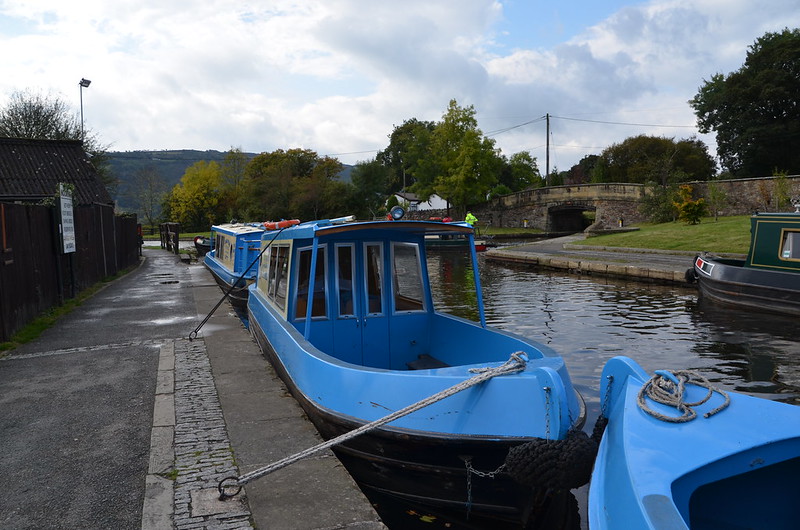
Now I'm off the footbridge and on the towpath. You can see the bridge that the Prince came through, over on the right side of the photo. Notice the yellow-green jacket right at the roof of the blue boat? That's the man on the Prince, guiding it through the turn, per the instructions given to him when he rented the narrow boat. In looking at Google Maps and trying to follow that canal visible underneath that bridge, I believe that you go to Llangollen that direction. Our next coach stop--Llangollen!

As I walked along the towpath I noticed these two enjoying their walk. So, after they passed, I looked behind me, hoping to get a photo of this gentleman and his friend. Not as good as I wanted, but I think it shows their comfortable relationship. I also like that you can see the footbridge and its flower boxes in the distance.
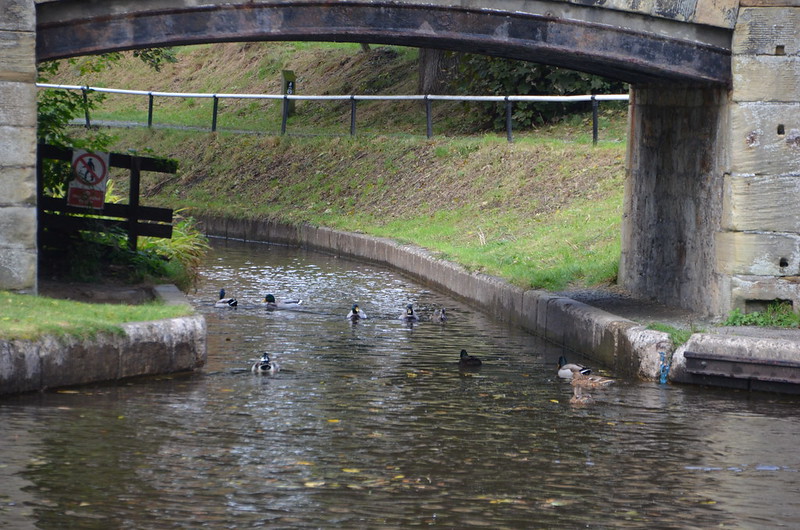
Across the way, ducks in the canal that comes underneath the bridge, the one that the Prince used to get onto the canal on the aqueduct, the one I believe goes to Llangollen--it's labeled the Shropshire Union Canal Llangollen Branch on Google Maps. Looks like you're not allowed to walk along this section of this canal, maybe elsewhere but not here although I did follow it on Google Maps and couldn't tell if there is walking space provided alongside it because the trees lining both sides block the view from above, so I dropped the Street View icon in there and saw a towpath! I've walked along the canal! My, oh, my. Would I ever like to be able to afford to rent one of those narrow boats and make this trip! What an adventure! Gorgeous scenery, lots of stone bridges to go under, all sorts of narrow boats going either way along the canal, and then I came to the Llangollen Moorings where quite a few boats had tied up. You buy a mooring ticket, park, and go on the towpath where you will. I imagine there's a time limit on the ticket.
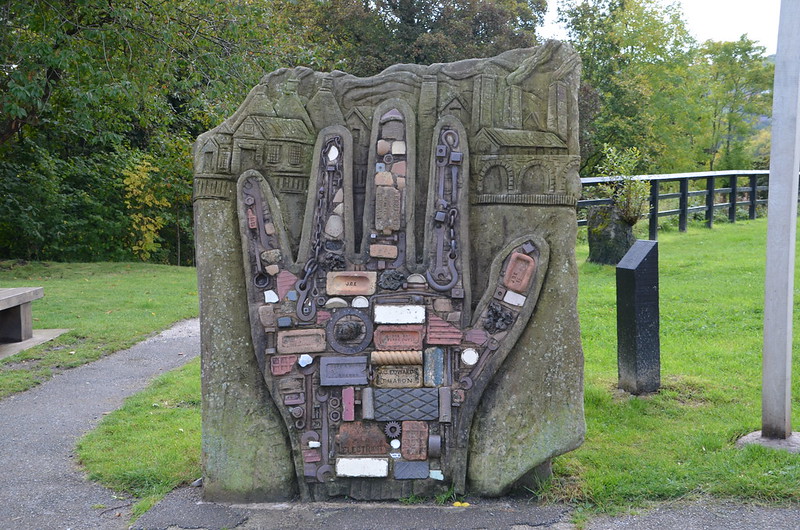
Back to my side of the canal, along the towpath, a sculpture. I like it. I found it labeled the Hand of Industry on several Web sites. Once you take a look at it, that certainly makes sense.


